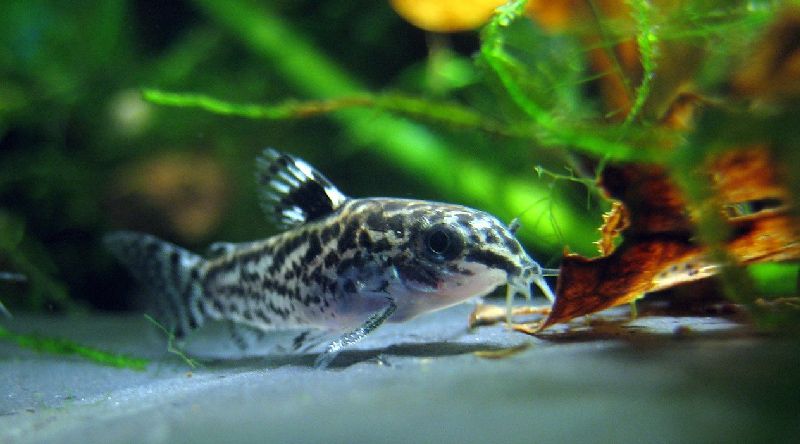Contents
- The Importance of Bottom Feeder Fish in Aquariums
- Popular Bottom Feeder Fish Species
- Adaptations of Bottom Feeder Fish
- Setting Up a Bottom Feeder Fish Tank
- Feeding Bottom Feeder Fish
- Common Challenges and How to Overcome Them
- Reproduction and Breeding of Bottom Feeder Fish
- The Role of Bottom Feeder Fish in the Wild
- Habitat and Distribution of Bottom Feeder Fish
- Bottom Feeder Fish in Aquaculture
Have you ever wondered about the incredible world of bottom feeder fish? These remarkable aquatic creatures play a crucial role in maintaining the balance of our ecosystems. From their unique adaptations to their fascinating behaviors, there is so much to discover and appreciate about these underrated species. In this article, we will take a closer look at the captivating world of bottom feeder fish, shedding light on their importance and unraveling the mysteries that lie beneath. Get ready to embark on an adventure like no other as we explore the depths of the bottom feeder tank fish kingdom.
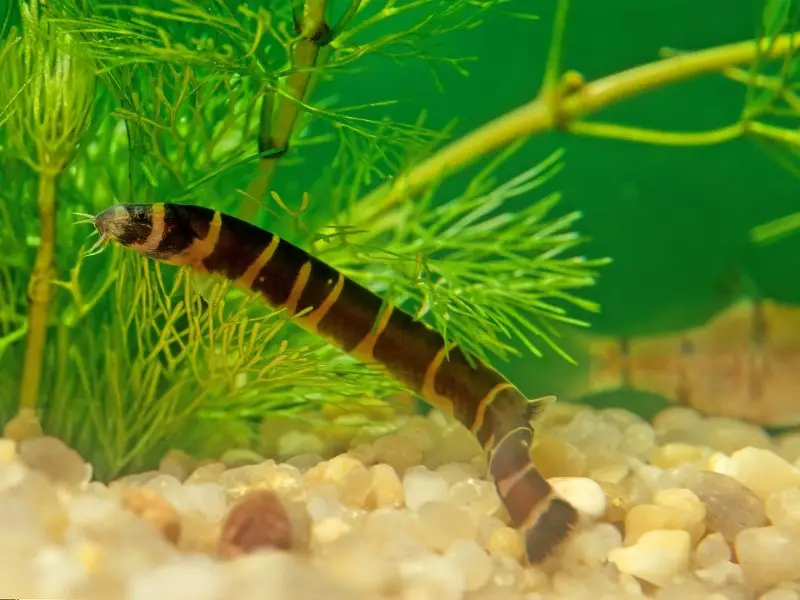
The Importance of Bottom Feeder Fish in Aquariums
Aquariums are captivating displays of underwater ecosystems, and every component plays a crucial role in maintaining a balanced and healthy environment. One group of fish that often goes unnoticed but plays a vital role is bottom feeder fish. These small, inconspicuous creatures are the unsung heroes of the aquarium, diligently working to ensure the cleanliness and stability of the tank. In this article, we will explore the fascinating world of bottom feeder fish and shed light on their significance in creating a thriving aquarium ecosystem.
Farmers of the Aquarium Ecosystem
Bottom feeder fish act as diligent caretakers, performing essential tasks that contribute to the overall health of the aquarium. They are like the farmers of the underwater world, constantly foraging and searching for food scraps and organic matter that settle at the bottom of the tank. By consuming this debris, they prevent the accumulation of waste and help maintain pristine water conditions.
Keeping the Tank Clean
One of the primary responsibilities of bottom feeder fish is to keep the tank clean. They fulfill this role by actively scavenging for uneaten food, decaying plants, and other organic matter that sinks to the substrate. This process helps prevent the buildup of harmful substances like ammonia and nitrites, which can be detrimental to other tank inhabitants. By diligently cleaning up debris, bottom feeder fish play a pivotal role in ensuring a clean and healthy aquarium environment.
Algae Control and Prevention
Algae growth is a common challenge in aquariums, often resulting in an unsightly green film coating the glass and decorations. However, bottom feeder fish are nature’s solution to this problem. Many species have a voracious appetite for algae, making them invaluable in controlling its growth. They graze on the surfaces, consuming algae and keeping it in check. By introducing bottom feeder fish to your aquarium, you can maintain a beautiful, algae-free environment with ease.
Natural Pest Control
In addition to algae, bottom feeder fish also contribute to pest control in aquariums. Harmful organisms like snails and harmful pests can multiply rapidly and disrupt the delicate balance of the tank. Fortunately, many bottom feeder species have developed feeding adaptations that allow them to consume these pests. By introducing these natural predators, you can effectively manage and control unwanted populations, ensuring the well-being of your aquarium.
Popular Bottom Feeder Fish Species
Now that we understand the importance of bottom feeder fish in aquariums let’s explore some popular species that make excellent additions to your tank. Each species brings its unique characteristics and attributes, adding diversity and functionality to the ecosystem.
Corydoras Catfish
Corydoras catfish are small, friendly, and entertaining bottom dwellers that bring a lively presence to any aquarium. Known for their distinct barbels and playful behavior, Corydoras catfish are highly adaptable and thrive in community tanks. They primarily feed on debris and uneaten food, making them excellent cleaners and helping to maintain excellent water quality.
Plecos
Plecos, also known as plecostomus or suckerfish, are renowned for their unique appearance and incredible algae-eating abilities. With their suction-cup-like mouths, they cling to surfaces and graze on algae, effortlessly keeping your tank clean. Plecos come in various sizes, so it’s essential to choose a species that suits the size of your tank to ensure their well-being.
Bristlenose Catfish
Bristlenose catfish, known for their distinctive bristle-like appendages on their heads, are another popular choice for bottom feeder fish. They are excellent algae eaters and also consume decaying vegetation, helping to maintain a clean and healthy environment. Bristlenose catfish are peaceful and can coexist with other species, making them a delightful addition to any aquarium.
Loaches
Loaches are a diverse group of bottom feeder fish that come in various sizes and colors. They are playful and active, constantly exploring the tank in search of food. Loaches have a knack for consuming snails and other small invertebrates, making them an excellent choice for pest control. Additionally, their unique body shape and patterns add visual interest to your aquarium.
Otocinclus
Otocinclus catfish, often referred to as “otos,” are beloved for their petite size and exceptional algae-eating abilities. These small fish are known to consume even microscopic algae particles, ensuring a pristine tank free of unsightly green growth. Otocinclus catfish are peaceful and prefer to live in groups, so it’s best to keep them with their own kind.
Chinese Algae Eaters
Chinese Algae Eaters, as the name suggests, are specialized algae consumers that excel at keeping your tank clean. However, it’s important to note that they can grow quite large and may become territorial as they mature. Therefore, it’s crucial to choose tankmates that they can peacefully coexist with.
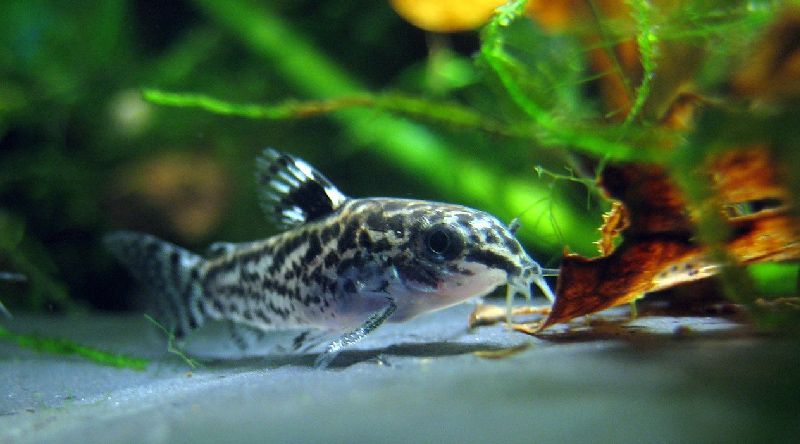
Adaptations of Bottom Feeder Fish
The remarkable adaptations of bottom feeder fish make them efficient at performing their essential tasks in the aquarium ecosystem. From their specialized mouth and feeding structures to their behavior and sensory adaptations, these fish are uniquely equipped to thrive in their role as cleaners and caretakers.
Mouth and Feeding Structures
Bottom feeder fish possess specialized mouth structures that allow them to efficiently feed on debris and algae. They may have specially adapted lips, barbels, or sucker-like mouths that help them grasp and consume food particles from various surfaces. These adaptations enable them to perform their cleaning duties effectively and contribute to maintaining a healthy aquarium environment.
Behavior and Foraging Techniques
Bottom feeder fish are known for their relentless foraging behavior. They spend a significant amount of time searching for food, constantly moving and exploring the bottom of the tank. They use their sensitive barbels or whiskers to navigate and locate edible particles, ensuring no debris or algae goes unnoticed.
Digestive Systems
To optimize their role as cleaners, bottom feeder fish have developed efficient digestive systems that enable them to process various types of food. They have specialized enzymes and gut bacteria that help break down organic matter and extract nutrients. This efficient digestion ensures that they can extract as much nourishment as possible from the debris they consume.
Sensory Adaptations
Bottom feeder fish rely on their senses to navigate their environment and locate food. They have well-developed chemosensory systems that enable them to detect chemical cues in the water, helping them locate potential food sources. Additionally, some species have excellent vision, allowing them to identify algae and small pests with ease.
Camouflage and Coloration
Many bottom feeder fish have evolved intricate camouflage and coloration patterns to protect themselves from predators. Their ability to blend in with their surroundings allows them to navigate their habitat safely, ensuring their survival while they perform their crucial cleaning duties in the aquarium.
Setting Up a Bottom Feeder Fish Tank
When setting up a tank specifically for bottom feeder fish, several factors need to be considered to ensure their well-being and enable them to fulfill their role effectively. These considerations include choosing the right tank size, providing adequate hiding spots, adding substrate and decorations, maintaining clean water, and considering compatible tankmates.
Choosing the Right Tank Size
The size of the tank is crucial to ensure the comfort and well-being of bottom feeder fish. It’s important to research the specific species you plan to keep to determine their space requirements. Some bottom feeder fish can grow quite large and may need more significant aquariums to thrive, while others are more suitable for smaller tanks. Providing ample space will enable the fish to move around freely and exhibit their natural behaviors.
Providing Adequate Hiding Spots
Bottom feeder fish often appreciate hiding spots, as they can be naturally shy or seek refuge when they feel threatened. Incorporating various decorations such as rocks, caves, plants, and driftwood will provide these fish with suitable hiding places. These features also create a more visually appealing and engaging environment for both the fish and the observer.
Adding Substrate and Decorations
Choosing the right substrate is important for bottom feeder fish. Some species prefer soft sand or fine gravel substrates, while others can tolerate coarser substrates. It’s crucial to research the specific requirements of the species you plan to keep to ensure their comfort. Additionally, the addition of decorations such as plants and driftwood not only enhances the aesthetics of the tank but also provides additional surfaces for algae growth and foraging opportunities.
Maintaining Clean Water
Maintaining clean water conditions is essential for the health and well-being of all aquarium inhabitants, including bottom feeder fish. Regular water changes, proper filtration, and monitoring of water parameters are crucial to ensure optimal water quality. Regular cleaning of the tank and removal of debris will also help prevent the accumulation of waste and maintain a clean environment for the fish.
Considering Compatible Tankmates
When selecting tankmates for your bottom feeder fish, it’s important to consider their compatibility. Bottom feeder fish are generally peaceful, but some species may exhibit territorial behavior or aggression towards others. It’s important to research the temperament and social requirements of each species to ensure a harmonious tank ecosystem. Choosing fish that have similar water parameter and dietary needs will also help create a successful and thriving community tank.
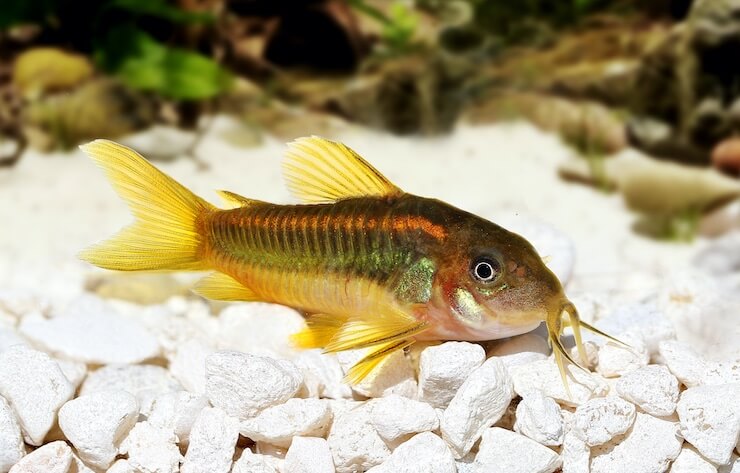
Feeding Bottom Feeder Fish
While bottom feeder fish derive a significant portion of their diet from scavenging and consuming debris, it’s important to supplement their diet with additional food to ensure their nutritional needs are met. Providing a well-balanced diet is crucial for their overall health and vitality.
Sinking Pellets and Granules
Sinking pellets and granules are a convenient and popular food option for bottom feeder fish. They are specially formulated to sink quickly, making them easily accessible for these fish. These sinking foods often contain a balanced mix of protein, carbohydrates, and essential nutrients, ensuring that the fish receive a nutritionally complete diet.
Fresh and Frozen Foods
Offering fresh or frozen foods can be an excellent way to provide variety and additional nutrition to bottom feeder fish. Foods such as bloodworms, brine shrimp, daphnia, and other small invertebrates are highly appreciated by these fish. It’s important to ensure that the food items are appropriately sized for the fish to consume comfortably.
Blanched Vegetables
Many bottom feeder fish species enjoy consuming blanched vegetables as part of their diet. Zucchini, cucumber, and spinach are favorites among these fish. These vegetables should be blanched briefly to soften them and make them more palatable. They can then be added to the tank, allowing the fish to feed on them at their leisure.
Supplementing with Algae Wafers
To provide a closer approximation to their natural diet, algae wafers can be offered to bottom feeder fish. These sinking wafers are specifically formulated to cater to the dietary needs of algae-eating species. They may contain a higher percentage of plant-based ingredients, including algae, to provide the necessary nutrients for these fish.
Common Challenges and How to Overcome Them
While bottom feeder fish are generally hardy and adaptable, there are some common challenges that aquarium enthusiasts might face when keeping them. Understanding these challenges and implementing appropriate measures can help ensure the optimal well-being of these fish.
Overfeeding and Poor Water Quality
Overfeeding is a common issue that can lead to poor water quality and negatively impact the health of bottom feeder fish. Uneaten food can quickly decompose, releasing harmful substances into the water. It’s crucial to feed these fish in moderation and observe their feeding habits to prevent overfeeding. Regular water changes and proper filtration are also necessary to maintain excellent water quality.
Aggression Towards Other Bottom Feeders
While bottom feeder fish are generally peaceful, some species may exhibit territorial behavior or aggression towards others of their kind. It’s important to carefully research the temperament of each species and ensure that the tank is adequately sized to accommodate multiple bottom feeders without overcrowding. Providing ample hiding spots and dividing territories within the tank can help alleviate potential conflicts.
Health Issues and Diseases
Like any other fish, bottom feeder fish can be susceptible to health issues and diseases. Stress, poor water quality, and inadequate nutrition can increase their vulnerability to illness. Maintaining excellent water conditions, providing a varied and nutritious diet, and monitoring their behavior regularly can help detect any signs of disease early on. Consulting with a knowledgeable aquarium professional or veterinarian can also be beneficial for diagnosing and treating any health issues.
Care Tips for Optimal Well-being
To ensure the optimal well-being of bottom feeder fish, it’s important to meet their basic care requirements. These include providing suitable tank conditions, monitoring water parameters, offering a diverse and nutritionally balanced diet, and maintaining regular cleaning and maintenance routines. Observing their behavior and appearance regularly can provide valuable insights into their health and overall condition.
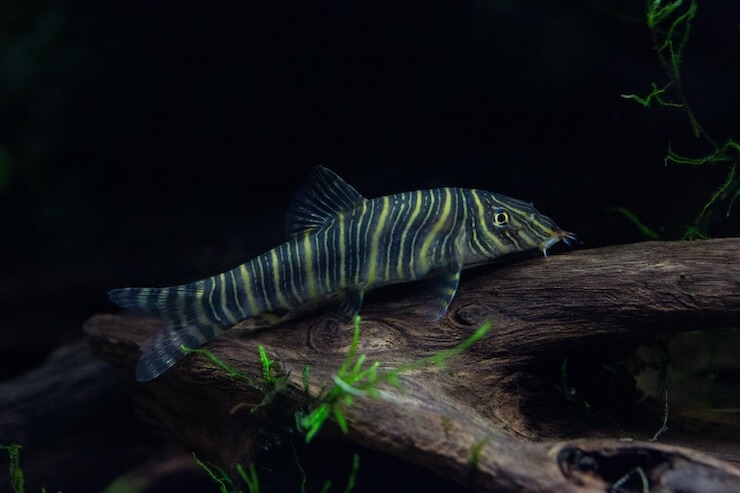
Reproduction and Breeding of Bottom Feeder Fish
While the primary purpose of bottom feeder fish in aquariums is to perform their essential cleaning duties, some enthusiasts may be interested in breeding these fascinating creatures. While breeding bottom feeder fish in a home aquarium can be challenging, it can also be a rewarding and educational experience if done correctly.
Breeding Behavior and Condition
To initiate breeding, it’s important to create the ideal conditions and provide an optimal environment for the specific species. Researching the reproductive behavior and requirements of the bottom feeder fish you wish to breed is essential. Some species require specific temperature, water quality, or specific triggers to stimulate breeding behavior.
Spawning Techniques
Spawning techniques vary depending on the species being bred. Some species require specific breeding caves or structures, while others may need particular water conditions or lighting. It’s crucial to closely follow the guidelines for each species and replicate their natural spawning conditions as closely as possible.
Caring for Eggs and Fry
Once the eggs are laid, it’s important to provide suitable conditions to ensure their survival. This may involve protecting the eggs from potential predators or transferring them to a separate breeding tank. Maintaining optimal water parameters and providing appropriate food for the fry once they hatch are crucial for their growth and development.
Separating Fry from Adults
As the fry grow, they may need to be separated from the adult fish to prevent predation or competition for resources. Providing suitable nursery tanks or containers will enable the fry to grow without interference from adults. It’s important to mimic the same water conditions and provide appropriate food for the growing fry.
The Role of Bottom Feeder Fish in the Wild
Bottom feeder fish play an integral role in the wild, contributing to the balance and stability of aquatic ecosystems. Their various functions and interactions with other species are essential for maintaining healthy habitats and promoting the overall well-being of aquatic environments.
Ecosystem Maintenance
In the wild, bottom feeder fish perform vital functions in maintaining the overall health of aquatic ecosystems. By consuming debris and decaying matter, they prevent the accumulation of organic waste and help maintain pristine water conditions. Their constant foraging and cleaning activities contribute to the overall cleanliness and balance of natural environments.
Food Sources and Nutrient Recycling
Bottom feeder fish are crucial food sources for many other species in the wild. Predatory fish and larger aquatic organisms rely on the abundance of bottom feeder fish as a source of nourishment. Additionally, their feeding activities play a crucial role in nutrient recycling, ensuring that valuable resources are efficiently used and distributed within the ecosystem.
Interactions with Other Species
Bottom feeder fish interact with various other species in their natural habitats. Some species form mutualistic relationships with other organisms, offering cleaning services by removing parasites and benefiting from the food sources provided. These interactions not only promote interspecies relationships but also contribute to the overall health and sustainability of the ecosystem.
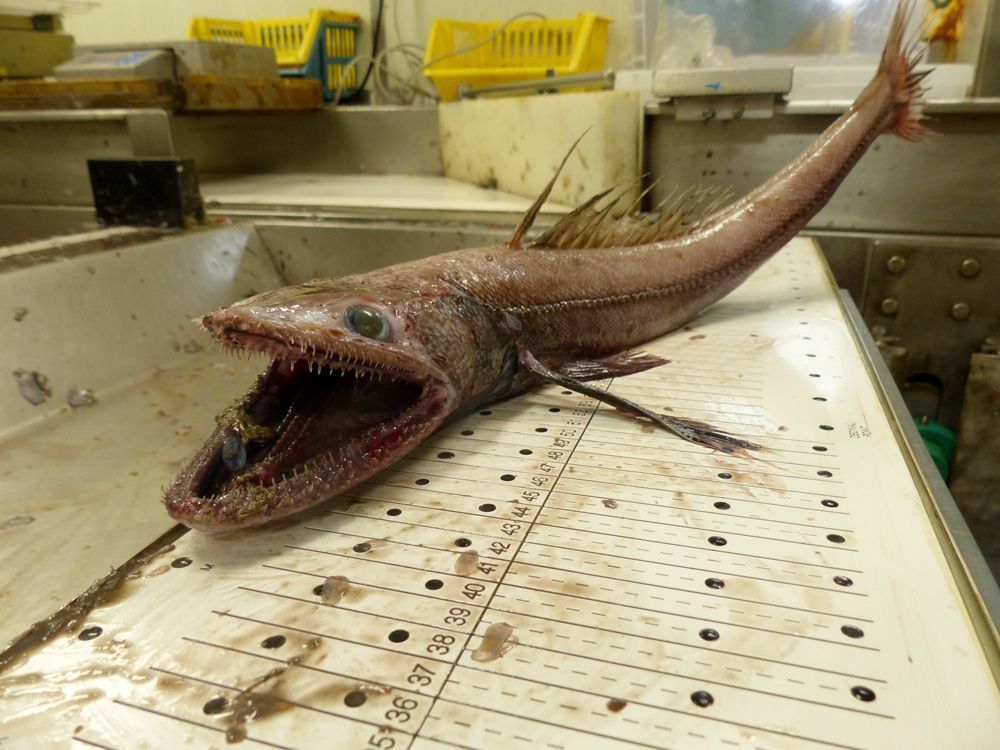
Habitat and Distribution of Bottom Feeder Fish
Bottom feeder fish inhabit a wide range of environments globally, reflecting their adaptability and versatility. From freshwater environments to coastal areas and tropical rainforests, these fascinating creatures have carved a niche for themselves in diverse habitats.
Freshwater Environments
Many bottom feeder fish species are native to freshwater environments such as rivers, streams, and lakes. They have adapted to thrive in these environments, utilizing the available food sources and contributing to ecosystem balance. Freshwater bottom feeder fish can be found in various regions worldwide, each with its unique characteristics and adaptations.
Coastal Areas and Estuaries
Coastal areas and estuaries are home to several bottom feeder fish species that share their habitats with various other marine organisms. These species often contribute to the cleanup of detritus and algae, ensuring optimal water conditions for other marine life. Their ability to withstand fluctuations in salinity levels allows them to thrive in these dynamic environments.
Tropical Rainforests
Within the lush canopies of tropical rainforests, numerous bottom feeder fish species have evolved to thrive in the dark, leaf-littered waters of forest streams and pools. They contribute to the decomposition and recycling of detritus, maintaining the health and balance of these unique ecosystems. Their exquisite camouflage and adaptability allow them to blend seamlessly into their surroundings.
Specific Geographic Regions
Certain bottom feeder fish species are endemic to specific geographic regions, showcasing their unique adaptations and characteristics. These species have evolved in isolation, adapting to the specific conditions and requirements of their habitats. Their distribution is often limited to these regions, making them even more fascinating and sought-after by enthusiasts.
Endangered Species
Unfortunately, due to various human-induced factors such as habitat destruction and pollution, some bottom feeder fish species are at risk of extinction. The destruction of their natural habitats and overexploitation pose significant threats to their survival. Conservation efforts and the establishment of protected areas are essential to safeguard these species and preserve their crucial roles in ecosystems.
Bottom Feeder Fish in Aquaculture
The significance of bottom feeder fish extends beyond the confines of aquariums, as these species also play important roles in aquaculture and other farming practices. Their unique abilities and adaptability make them valuable contributions to these industries.
Cultivation for Commercial Purposes
Bottom feeder fish species are often cultivated for commercial purposes, primarily to meet the increasing demand for aquarium fish. Their hardiness and ability to adapt to various conditions make them suitable candidates for breeding in captivity. This ensures a sustainable supply of these species for aquarium enthusiasts while reducing the pressure on wild populations.
Role in Aquaponics Systems
Aquaponics is an innovative and sustainable farming method that combines aquaculture (raising fish) with hydroponics (cultivating plants in water). Bottom feeder fish play a vital role in this system, as their waste provides essential nutrients for the plants being cultivated. Simultaneously, the plants help filter and purify the water, creating a symbiotic and self-sustaining system.
Sustainability and Conservation Efforts
With increasing awareness about environmental conservation and responsible fishkeeping, efforts are being made to promote sustainability in the aquarium industry. These efforts include captive breeding programs, sustainable sourcing practices, and education initiatives aimed at ensuring the well-being of bottom feeder fish and their natural habitats. By working collectively, we can help protect these extraordinary and invaluable creatures.
In conclusion, bottom feeder fish are unsung heroes that play a crucial role in maintaining the balance and cleanliness of aquarium ecosystems. Their adaptive characteristics and unique adaptations make them fascinating and valuable additions to any tank. By understanding their importance, providing suitable care, and participating in conservation efforts, we can help ensure the well-being and longevity of these incredible creatures.

